Art of the Deal

In the market for Judaica art? These agents make the perfect match

Meir Kruter’s gallery is off his kitchen, in the dining room.
On the wall are four large original paintings, 36x48, of the Bostoner Rebbe, Rav Moshe Shapira, Rav Kook and the Steipler, all in this artist/photographer’s signature mosaic style — pixeled mosaics with hundreds of different Hebrew letters that occupy tiny boxes, the faces of gedolim created with the texts of their teachings. His latest painting in this series, a vivid, colorful portrait of Chacham Ovadiah Yosef, leans against the wall for people to view and appreciate. Other works are stacked vertically in the corner. Hundreds of thousands of dollars in art, waiting for a home.
Artists are a type. Talk to them, and they often discuss the feelings, the thoughts, the inspiration behind their work. Meir likes to talk about emes, and how he translates that into the grid mosaic in his work. But these artists often get stuck and start stumbling when discussing strategies for selling their work and getting it out into the world. Meir Kruter would be the first to say that he’s not the best at selling his art.
Like all industries, there’s the business backend of Judaica art. It’s the part that makes it all come together, giving access to the public and parnassah to the artist. But the Jewish art world is small, as is the buyer’s market, and today there are just 11 Judaica art dealers making it their full-time parnassah, according to Moshe Frank of the Jewish Art Fair and Leviim Art Gallery in Crown Heights.
Meir Kruter is one contemporary artist whose work has received acclaim and garnered interest from dealers and galleries. So why is he cautious about using their services, preferring to display his work on his website and in his own dining room, hoping someone will buy? On the other hand, if the Jewish art world is so small, why is a middleman even needed?

Meir Kruter’s specialized portraits have garnered interest from dealers and galleries (and he even brought a picture of the Steipler to Rav Chaim ztz”l), but at this point he’d prefer to go it alone out of his dining room
A Question of Trust
IN reality, though, dealers and galleries serve two important roles. First, artists usually prefer to focus on their art, while the business of selling feels foreign, almost profane. Dealers can aid artists tremendously by giving them a platform they’d otherwise not have and a way to get their work and name out without having to reckon with the bottom line. With a dealer, artists never have to meet their clients, let alone negotiate with them, allowing them instead to focus all their time and energy on their art.
“However much they can sell, they can paint more,” says Kovi Leiter of Leiter Art, a virtual art gallery.
Dealers and galleries fill another role as well — that of a trusted authority. People who are investing in art prefer to have a second set of eyes on the work they’re considering, confirming whether it is indeed good art and a good investment. When a gallery or dealer decides to carry an artist’s work, it comes with an implicit seal of approval, telling the customer, “This artist’s work is worth it.” Dealers generally won’t risk their reputation on mediocre work, which means more discernment on their part and therefore more trust from the buyer.
Dealers and galleries also view their role as the customer’s guide and educator. While artists will simply sell you their work, a dealer is going to get to know your interests and taste and try to introduce you to works they think you’ll like, or to artists you may not have even heard of. Every client needs something else, says Kovi. Some just want something pretty for their wall, while others have clear ideas about art. Either way, there are also technical issues: What are the colors and dimensions of the room, and what is the budget?
A dealer’s role, according to Kovi, is to find something that touches each person’s heart. “You don’t need to be a connoisseur,” he says. “Everyone can have a love for art.”
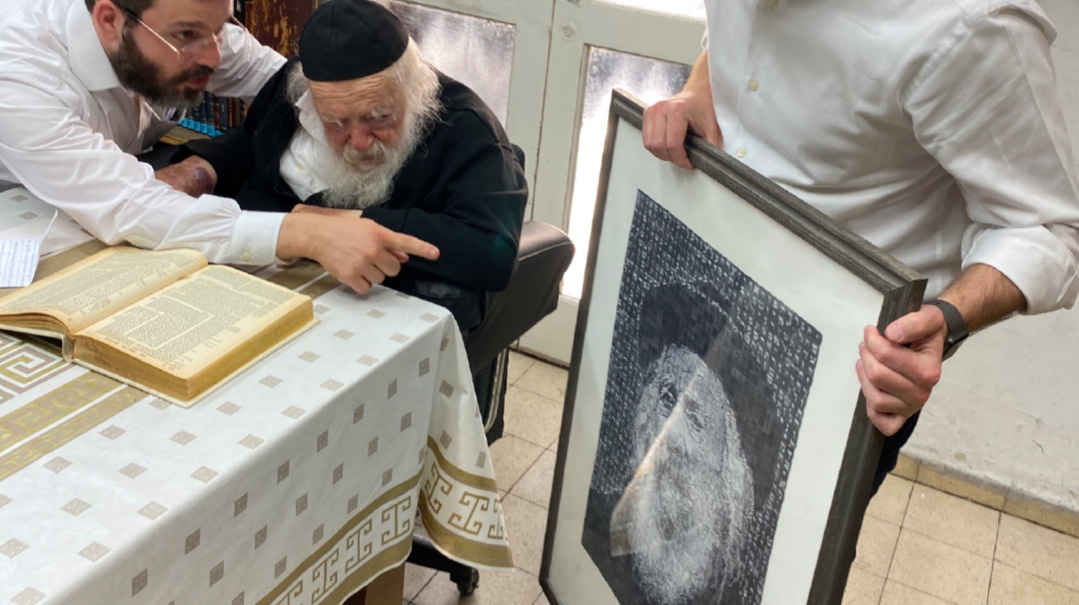
Because individual artists, unless they already have name recognition, can’t rate their own status, it’s a caveat emptor market when buying directly from an artist. Meir Kruter is one contemporary artist, though, who has earned name recognition: His portrait of the Chofetz Chaim garnered a lot of buzz when he debuted it. Its style is distinct and unique to the Jewish art world (those steeped in art might recognize gridded-portrait echoes of the artist Chuck Close in his work), so he doesn’t need a dealer to gain fame.
You can’t mistake Meir’s paintings. He can offer prints in different sizes and change the background color on a print, but he won’t customize colors or other options. On the other hand, artist Keren Gordon says many artists will create custom work for clients, often at the same price as a ready-made piece. Custom artwork can be very meaningful, but the artist’s artistic perspective and expression is not the final verdict in such pieces. And while artists generally have their go-to style of painting, a dealer can be selective and introduce clients to many different styles to choose from.
Dealers also see themselves as companions and confidantes. “It’s a real relationship,” says Moshe Frank of the Leviim gallery, “Many art collectors have even invested in my other business, and make sure to invite me to their children’s weddings.”
Both artist and client want to know the decision-making process: How does a dealer or gallery decide whether or not to represent an artist?
There isn’t one clear answer, but it seems to come down to intuition, an intuition that has been honed over many years of viewing and evaluating art. Moshe Frank says he gets hundreds of submissions for consideration.
“The startup cost is low — you can get a canvas and some paint in a Dollar Tree and you can create something,” he says. Everyone thinks their painting is good enough to sell. Moshe suggests people show their paintings to strangers — not their bubby who will give them compliments and tell them they’re brilliant — in order to get real feedback. Most dealers won’t represent someone they don’t believe in or whose work they don’t love. There’s too much at stake, and the market is glutted with people who consider themselves artists.
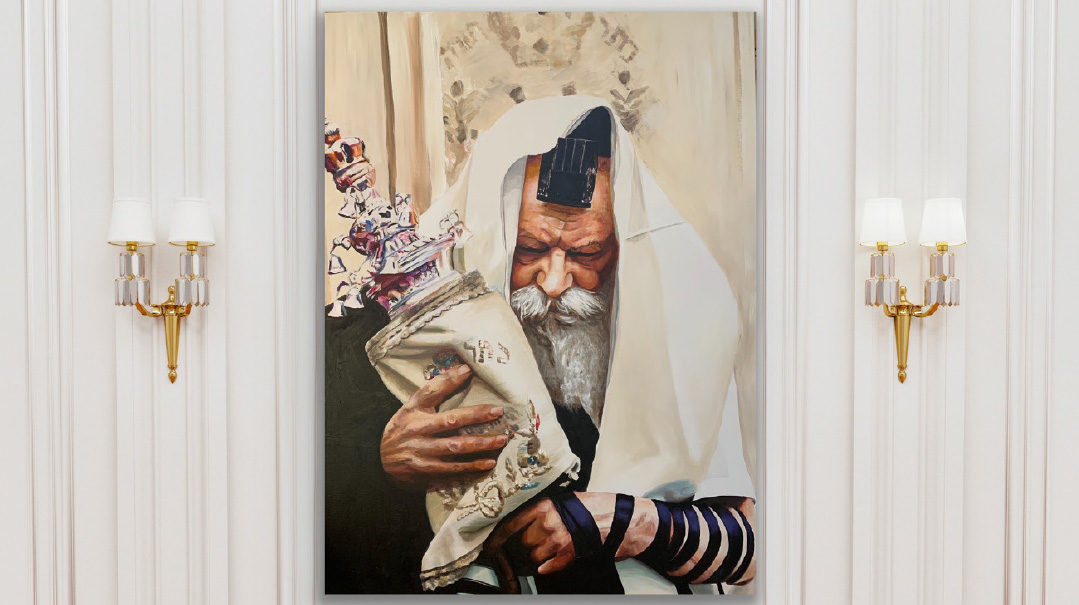
Keren Gordon, who sells both through a dealer and independently on social media, says many artists will create custom work for clients, often at the same price as a ready-made piece
Taking Care of Business
How do artists and dealers work out the financials? Some dealers take a clean 50 percent cut of proceeds, while others might take 30 percent or less. And then there are those, like Moshe Frank, who has flexible arrangements depending on the artist. He calculates his commission based on how much work he must do on behalf of the artist. If he’s launching a new artist, which involves introductions to art buyers and collectors, posting, and promoting their work across his platforms, he’ll take a significant fee. For artists who already have name recognition and who just need someone to take care of the business end while they focus on what they do best, he takes a smaller cut.
Because Kovi Leiter’s gallery is virtual and he doesn’t physically possess most of the paintings he represents, it’s easier for him to be flexible in representing artists around the world, or when an artist finds a buyer on their own. There are some artists who want nothing to do with the selling aspect, so Kovi will take over the entire process, from storage to marketing to resizing to shipping.
Sometimes a dealer will skip on an artist and regret it fairly quickly, but by that time the artist has already moved on to another dealer. Sometimes they’ll sign an artist who ends up being every artist’s cliché — moody, temperamental, attached to their work and difficult to work with. While many galleries have expressed interest in carrying Meir Kruter’s work, he hasn’t accepted the offers — yet. Commission rates are top of mind when he considers the pro-con balance.
Just how much money can those commissions add up to? Moshe Frank says there are essentially three levels of Jewish art: paintings that sell for $2-5K (98 percent of Jewish art is in this range) — what he calls décor art; paintings $10K or over that are better and more skillfully crafted; and investment art, with its $30-40K price tag — there are less than two dozen Jewish artists in that category (and some of them are no longer alive).
Artists, for their part, often feel that the dealers take too large a cut for the amount of work they actually do, which might not be that much.
“When you factor in the materials and the cost and the time, the dealers are making a lot more money on the paintings than the artists are,” says artist Alex Greenfield.
Meir agrees. “I think it’s something all artists have a hard time getting over. It’s a lot to give of yourself — it kind of feels like taxes.”
Some artists complain that dealers are not always honest regarding how much paintings are sold for. An artist can be told a particular painting sold for $8K, and therefore will receive $4K for the work as per the 50 percent cut rate. Later the artist might find out that the dealer actually wheedled out $15K from the client, but he doesn’t want to be confrontational — the Jewish art world is small and artists tread lightly. There is also the flipside of this: An artist will sell a painting for a set price, say $4,000, to a dealer who then sells it to a client for $8,000. If a client approaches the artist directly and offers to buy it for $6,000, that puts the artist in a situation where he’s making more money, but he’s also giving the buyer the impression that the dealer was price-gouging. Trust and integrity in pricing is a two-way street.

Moshe Frank of the Leviim gallery: Dealers build real relationships with collectors, who consider them partners and confidants
That’s why Keren Gordon has a different arrangement with one of her dealers, Israel Clapman of Fine Arts by Clapman. She sets her price, but has no idea what he’ll actually sell the painting for. Last year Clapman sold 14 of Keren’s original paintings.
How does Meir Kruter price his paintings without a dealer? “It’s half science, half intuition,” he says.
Some dealers function as black-box middlemen, where the artist and client are never in touch. Some artists prefer this, as it’s much less distracting. Other more business-oriented artists prefer to know who is buying their paintings, as the most common client is a repeat client. Dealers know this as well, and they don’t necessarily care that the repeat client buys the same artist, as long as it’s through them.
“I’d look online and I’d see people with my painting in their house — I didn’t even know they bought it,” Alex says.
(Sometimes that close relationship dealers forge with their clients can make artists feel uncomfortable, especially if the artist has certain concerns about a particular work. The dealer might not reach out on the artist’s behalf, which can make the artist uncomfortable with some art that is out there, or may give him a poor or undeserved reputation.)
Avi Polinsky, a promoter of Israeli and Judaica artists nationally since the 1990s, shares that while most of his artists are in Israel, his client base is in America. Avi, who is based in the Five Towns, says that when his clients let him know they’ll be traveling to Israel, he’ll often set up meetings between them and the artists. He says it creates a stronger bond and connection when there’s a real person attached on either side.

Keeping the Market Healthy
Dealers have their concerns about artists as well. Avi Polinsky relates how right after he introduced a particular artist to potential clients, she claimed that they were on a list she’d put together before she met Avi and refused to give him any commission for those sales.
Dealers and gallery owners also need to keep a larger view of the secondary market, when paintings are resold or traded in after purchase. Artists don’t need to consider their works’ resale value because they receive no compensation, but dealers need to keep the market healthy, and if they sell a painting for $10K and a few years later it is only valued at $2K, it means it was overvalued in the first place and this skews the market.
Moshe Frank explains that because there are few Jewish artists of real acclaim (Huvy and Holtz, for example), those artists’ works are coveted by galleries, dealers, and art collectors. But the limited supply and scarcity not only jacks up prices, but sometimes dealers will disparage other dealers’ collections, asserting aspersions on their authenticity.
Obviously, it’s more challenging to verify a work after the artist’s passing, but there are processes dealers and galleries use to authenticate a work to the best of their ability. It’s an exhaustive and expensive process, but necessary considering the money at stake.
Keren Gordon takes issue with the whole “real value” attitude that galleries and dealers have toward deceased artists. “The works of deceased artists selling for a lot now might not have great resale value,” she says. “A lot of it is about trends, and I’m not sure we can predict what art the next generation will want.”
Another point of tension between artists and dealers is the output rate. The more art dealers sell, the more they can potentially earn, especially popular artists. Dealers often encourage artists to be more prolific in their output, which can affect the quality and depth of the artist’s work. Dealers may also encourage the use of acrylic paints over oil as they dry significantly faster (a day versus months).
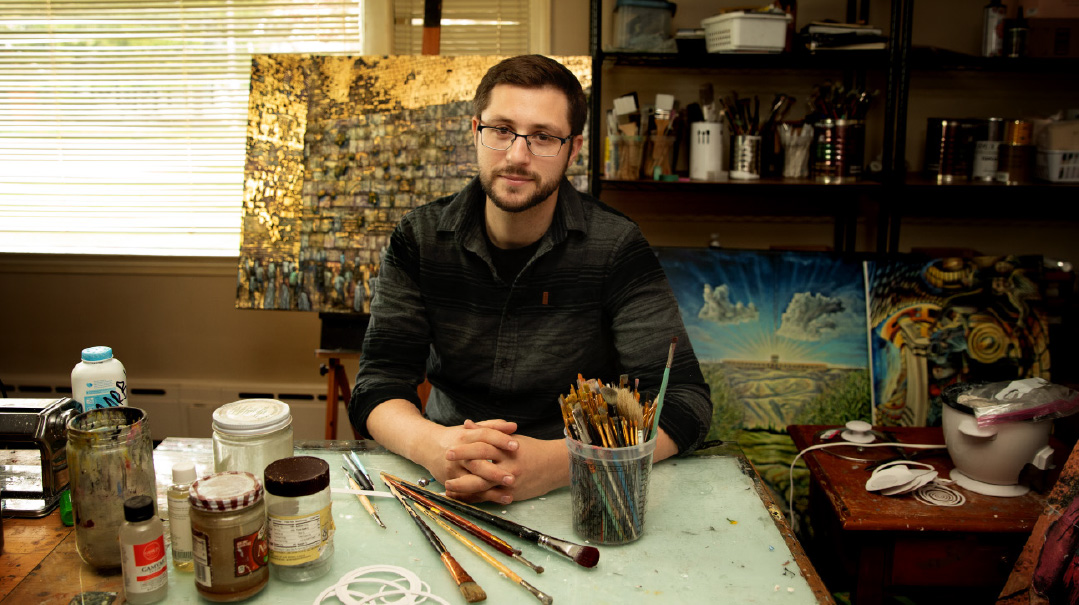
Alex Greenfield with a selection of his work. “When you factor in the materials the cost and the time, the dealers are making a lot more money on the paintings than the artists are”
Alex shares that often, in order to maximize profits, dealers will insist that the artist create more paintings within a shorter time frame, even if it means compromising on quality. He says the ideal situation is to work with a solo marketer in order to produce fewer, more expensive paintings that are of a higher quality in artistic technique and expression than the mass-produced product.
Keren Gordon has learned to straddle the divide. She sells some of her paintings through a dealer, but she also sells independently through WhatsApp and Instagram. She runs a WhatsApp group called Jewish Art Lovers, together with artists Aliza Marton and Shifra Crawford Scheinman. The group has over 1,000 participants, and Judaica art can only be posted for sale directly from the artists. The styles posted vary from contemporary to impressionist to abstract to classic still lifes. Keren says the chat was born out a need for artists to market their own work on a modest platform and reach a frum audience that would not search on Google, Instagram, or other platforms.
Although she has no issue with dealers, she sees the value in building relationships directly with clients. She also has a good business sense, having invested a lot of time learning about how artists can market and sell their work, and she coaches other artists in this area. And like the dealers, she too stresses that the likeliest customer is a repeat customer, so cultivating personal relationships is paramount to her.
Meir Kruter concurs. Because he’s never used a dealer, he knows many of his clients very well, and that’s not something he takes lightly, or wants to give up.

Works by Alex Greenfield and Meir Kruter. Art and soul
Undercut by Copycats
Over the past few years Jewish art has shifted into a more contemporary abstract style. What this means (for those not into art) is that the art is not an attempt to capture a perfect still life, camera-perfect representation, but rather the spirit in vague detail, allowing the viewer’s imagination to fill in the blanks. A circle with a vertical streak beneath it might, for example, easily look like a person.
This style is very popular, and it’s also much easier to master for beginning artists. Artists don’t need much of a skill set or prowess to create artwork like this, which opens the door for less skilled artists to sell their work at a high price.
How does one filter the skilled from the mediocre? “A good trick is to look at the faces and the hands,” says Alex Greenfield. “If they’re blurred, the artist likely can’t draw.”
Avi Polinsky is a little softer in his assessment. While he agrees that many of today’s artists cannot draw realistically or in the classic styles of art, artists who do have those skills have a real advantage when they move into the contemporary abstract space because they can mix and match their skills and elevate a piece significantly.
Keren voiced another market concern. “There are a few artists who create original ideas. And there are then a lot of artists who are copying the same thing. It’s not necessarily always difficult to execute the artwork well — the hardest part is to be creative and come up with something original.”
She says it’s a shame that so much copycat work is out there, and often selling for a lot less than what the original really creative artist’s work is going for.
On the other hand, Keren feels people really do want to connect with the soul in art, with the neshamah and intentions of the artist. She shared a story of a customer who asked a million questions before purchasing a painting, including asking to be able to return it if it didn’t work for her space. Keren was very hesitant to sell to this woman and held her breathe once the painting was delivered, expecting a barrage of complaints and concerns. Instead she received a text with effusive brachos and thanks. “Can’t cook or clean. Mesmerized,” the woman texted her. Keren, for her part, felt honored to be a kli for another person’s simchah.
Kovi Leiter relates that one of the artists he represents — an acclaimed, award-winning artist with many a copycat — said she doesn’t really mind it, and even finds it flattering, but told Kovi, “If I see you selling anyone who copies my style, we’re done.”
Dealers today are also navigating the rise of social media artists. They post their works on platforms and go directly to their customers. “You’re connecting to the influencer and the medium is art,” says Moshe Frank, explaining that if someone isn’t a great artist but has a great personality, they can outsell someone much more talented.
Both Meir and Alex display their work on social media, but their followings are on the modest end. Meir would like to market and push his work more on the platforms, but like most artists (or people in general) he’s very uncomfortable with selling himself. Alex is more dismissive of social media and the influencer persona. However, he knows it’s part of his marketing hishtadlus, so he makes the effort when he finds a few minutes, usually after finishing a painting.
It seems that today, art suffers from the same problem society at large struggles with: There are those with great personalities and little skill, and those with great skill but huge insecurities. Often great artists don’t sell because it’s too hard to put themselves out there, or even show their work to a dealer or gallery.
Talya Zahler, an artist and art teacher, feels vulnerable putting herself out there, but when she sees so many artists on social media platforms, she says to herself, “Okay, I should start selling my artwork because if these people are selling theirs, I definitely could be selling.”
Alex has a bit of disdain for the social media artist. “If you’re painting 12 hours a day like I am, you don’t have time to share pictures of your coffee and how to dance when you paint.”
Does quality make a difference, if the client is happy and enjoys the art? Moshe Frank isn’t really concerned that real skill gets passed over for pizzazz. In his experience with a gallery, he finds people tend to gravitate toward the same pieces — the most expensive ones. Regardless of what people are seeing on social media, he believes that there’s a certain intuition we all possess even if we don’t know art. We react to it on a gut level.
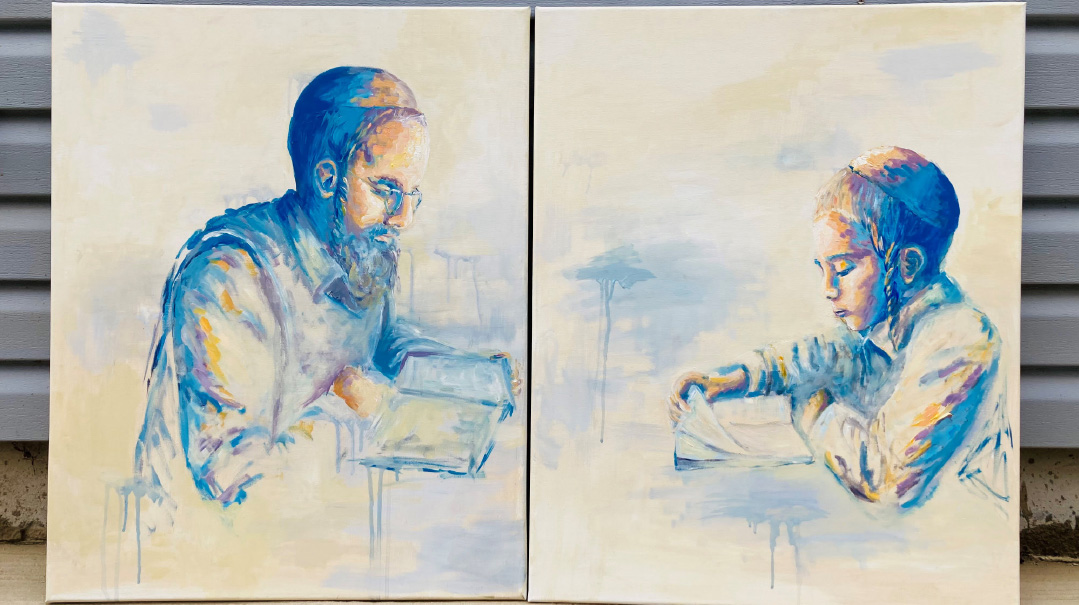
“If these people are selling their work, I definitely could be selling.” Talya Zahler’s work stirs the soul, but she still feels vulnerable putting herself out there
As Long as It Matches
Art, like all things, is ever evolving and shifting. Right now, the tastemakers, according to Alex, are the home designers. They dictate the designs of homes, and often, art is looked at like a piece of furniture.
“It’s funny, two years ago, people didn’t want any color,” he notes. “Now everybody wants color.” Alex speculates that the pendulum will shift to more technical art, which will separate a lot of the dabbling dilettantes from the real pros.
Avi agrees with the décor assessment. “People just want things to match,” he says. “They’re not really interested in an art collection or buying something they love.”
All art dealers and galleries are connected with designers, and the art usually comes in at the last stage. “Often by the time people get up to the art, they’re overwhelmed by how much they’ve spent decorating, so they don’t buy. They hold off till later,” Kovi observes. “However, once they do come back to purchase, they’re so happy and often wish they’d done it earlier.”
While buying art used to be exclusive to the well-monied and well-educated, more and more people are buying art today, this despite the gripes against social media, copycats, and decorators dictating tastes.
Keren sees the shift happening over sales. “I post my art on my WhatsApp status on a daily basis. I have made sales from people who I never would have thought would buy art.” She says that the more people see it, the more people appreciate it and consider it normal. “It also creates a desire within them, the fact that they see it on a daily basis.” Keren says.
There’s still quite a way to go in shifting the understanding and appreciation of art. Meir Kruter is hopeful that people will come to appreciate art and value its intrinsic worth. He looks to industry shift change in kosher food over the past two decades and sees it as a potential model for art.
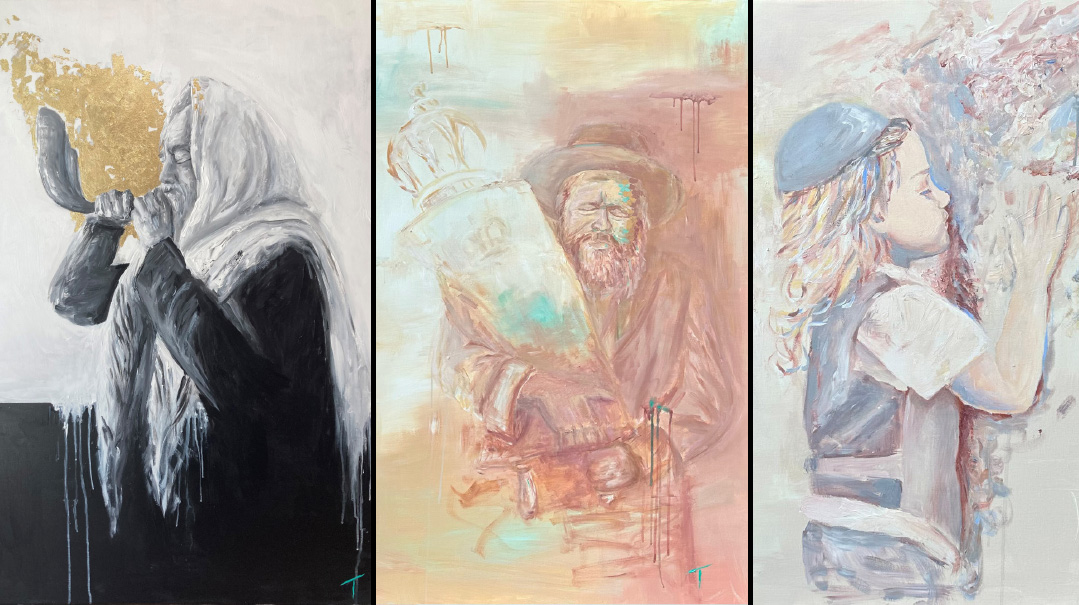
“People used to think it was ridiculous to spend $500 on a meal for just you and your wife. Today it’s increasingly normal. People are proud foodies, connoisseurs of fine dining, seeking new experiences and depth of understanding.”
Yes, there’s the huge price point question, because a $30 schnitzel sandwich, while a lot for schnitzel, is less than the thousands you need to spend on an original painting. But as Meir suggests, “Your schnitzel sandwich will be gone soon, while a painting you can enjoy your whole life and pass on to your grandkids — and you don’t have to hit they gym after buying a painting.”
Art is not just a pretty something to hang on your wall and match your couch. It’s reflective and meditative, it’s a life source of joy, perspective, and introspection. It is at the core of what makes us human, the expression of our creativity and self. When done right, art is an investment that appreciates and is a precious family heirloom, reflecting not just sentimentality, but the value and spirit the art imbues.
Avi has a long-time client who bought many paintings from him. He bumped into him one day and the client shared that he and his wife decided that they had enough Judaica art, and they were going to see what other art they could add to their collection. They went to SoHo five Sundays in a row to browse. “So, what did you buy?” Avi asked. The client answered, “Nothing!” The client said he realized that there was nothing he connected with. There may have been pretty scenes on boats and the like, but nothing that touched and resonated, like scenes depicting Jewish life or mekomos hakedoshim.
Meanwhile, until people appreciate how much art can touch them deeply, how it can connect them to their Yiddishkeit, the artists and dealers will continue to create and spread the good word. “Can you include my art in the article?” was a request of all artists interviewed, because when it comes down to it, if art is created, and no one sees it, how can it touch you?
(Originally featured in Mishpacha, Issue 975)
Oops! We could not locate your form.







